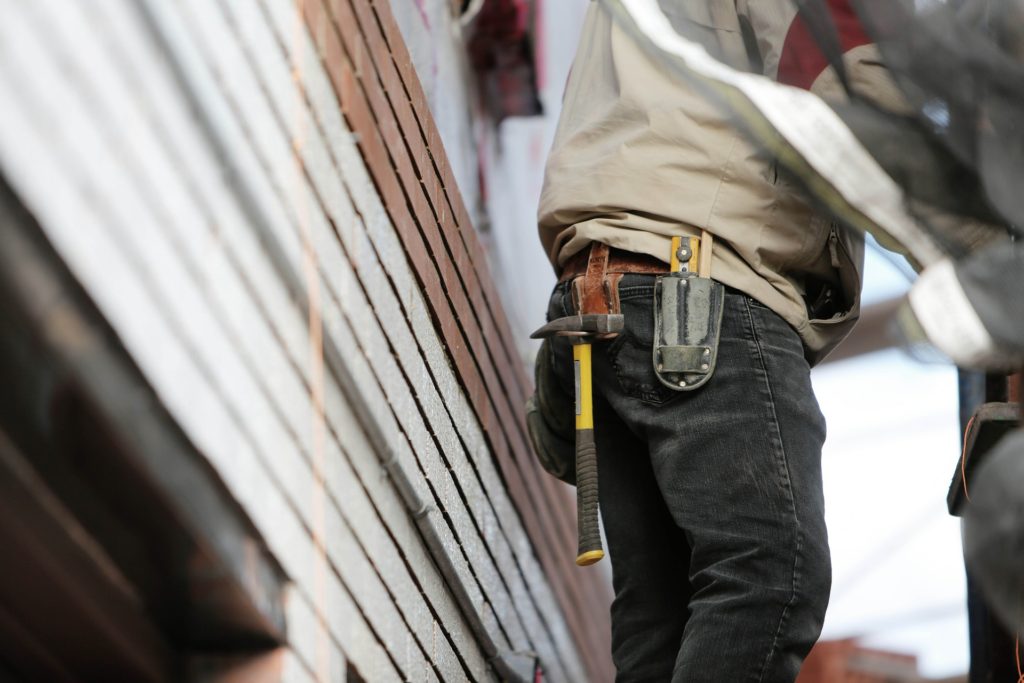
I. PRIVATE PROJECTS – MECHANIC’S LIENS.
A. Introduction.
1. Purpose.
California mechanic’s lien statutesprovide lien rights to the following suppliers of labors or materials:
Mechanics, materialmen, contractors, subcontractors, lessors of equipment, artisans, architects, registered engineers, licensed land surveyors, machinists, builders, teamsters, and draymen, and all persons and laborers of every class performing labor upon or bestowing skill or other necessary services on, or furnishing materials or leasing equipment to be used or consumed in or furnishing appliances, teams, or power, contributing to a work of improvement. . .
The lien of those who furnish labor or material on a parcel of land covers the land as well as the buildings and other structures on that land. The mechanic’s lien law in California is remedial in character and should be liberally construed in its entirety with a view to affect its objects and to promote justice.
A mechanic’s lien is a claim against the real property on which the claimant has bestowed labor or furnished material for the value of the labor done and material furnished. One statues states that the lien attaches “to the work of improvement and the land on which it is situated together with a convenient space about the same or so much as may be required for the convenient use and occupation thereof.” The lien therefore is primarily attached to the structure, and not the land.
2. Rationale.
Mechanic’s liensarise only because a statute provides for them. One statue states that “[f]or the purposes of this chapter, every contractor, subcontractor, sub-subcontractor, architect, builder, or other person having charge of a work of improvement a portion thereof shall be held to be the agent of the owner.” Because of the statutorily imposed agency relationship, the owner is responsible for the reasonable value of labor and materials furnished to his agents. In short, a claimant who furnished labor and materials at the instance of any of these is entitled to mechanic’s lien rights. A claimant who has not dealt with any of these statutory agents must have dealt with the owner or the owner’s common law agents to assert a lien claim.
B. Who May Lien.
Any person who furnishes labor or materials to a project to construct the work of improvement on real property is entitled to a mechanic’s lien (unless he or she comes within a statutory or case law exception).
1. Who Is A Materialman?
California statue defines the term “materialman” as “any person who furnishes materials and supplies to be used or consumed in any work of improvement.” An exception to this definition is materialman’s materialman, who do not have lien rights.
A subcontractor confers lien rights on his or her subcontractors, material suppliers, and employees, but a materialman does not, because he or she is not designated a statutory agent under the statute. A claimant will be held to be a sub contractor, and not a materialman, if he or she furnishes a definite, substantial part of the work of improvement that was specially fabricated to comply with the plans and specifications of the prime contract.
A claimant is entitled to a mechanic’s lien for furnishing material or leasing equipment “to be used or consumed” in a work of improvement. In other words, a material supplier must prove not only that the material was actually used in the particular construction project, but also that it was furnished with that purpose in mind. A material supplier who sells to a contractor without the intent that the goods be used on a particular construction project has no right to a lien on that project. A materialman, therefore, must show both use and consumption of materials along with some proof of delivery to establish the requisite intent that the material was used on a particular project.
Improvements must be also permanent in order for mechanic’s lien rights to arise. A permanent improvement, or a “fixture”, is determined on an objective basis and does not depend on the subjective intent of the owner of the property.
2. Who Is The Laborer?
A “laborer” is “any person who, acting as an employee, performs labor upon or bestows skill or other necessary services on any work of improvement. To be entitled to mechanic’s lien rights, a laborer’s labor, whether physical or mental, must have been used directly in the work of improvement. In other words, the term “laborer” can be applied to those who toil with their brains as well as those who work with their hands.

C. What May Be Liened?
The California Constitutionguarantees “a lien upon the property upon which [mechanic’s and others] have bestowed labor or furnished material.” Under California’s mechanic’s lien law, the lien attaches “to the work of improvement, and the land on which it is situated, together with a convenient space about the same or so much as may be required for the convenient use and occupation thereof.”
D. What Type of Notice is Required?
1. The Preliminary Twenty-Day Notice.
a. Purpose.
For most claimants who furnish labor, services, equipment, or materials to a private work of improvement, service of a preliminary twenty-day notice is a prerequisite to the enforcement of both mechanic’s lien and stop notice rights. The primary purpose of twenty-day notice is to protect the non-contracting property owner from the claims of those not in a direct contractual relationship with him or her, such as subcontractors or material suppliers.
b. Who Must Give The Notice?
Under California statute, the following potential claimants either are exempt from the notice requirement or must serve a preliminary twenty-day noticeas a prerequisite to pursuing a claim:
- The prime contractor need not give a preliminary twenty-day notice;
- Anyone performing actual labor for wages need not give a preliminary twenty-day notice;
- An express trust fund described in CC §3111 need not give a preliminary twenty-day notice;
- A person furnishing labor, service, equipment, or materials under direct contract with the owner except those persons in sections (1) through (3) above, must serve a preliminary twenty-day notice on the construction lender or the reputed construction lender as a prerequisite to enforcing mechanic’s lien or stop notice rights;
- Anyone else furnishing labor, services, equipment, or materials for which a lien could otherwise be claimed or a stop notice given under the mechanic’s lien law must serve a preliminary twenty-day notice on the owner or reputed owner, the original contractor or reputed contractor, and the construction lender or reputed construction lender as a prerequisite to enforcement of mechanic’s lien or stop notice rights. In other words, those not under direct contract with the owner and not falling within (1) – (3) above.
c. When the Notice Must Be Served.
The preliminary twenty-day notice for private works must be served within twenty days after the claimant has first furnished to the job site the labor, services, equipment, or materials for which a mechanic’s lien claim is to be made. Failure to serve the notice within twenty days does not invalidate the entire claim. If service is late, however, the claimant is limited to claiming a lien or stop notice only for labor, services, equipment, or materials furnished within twenty days of service of the notice, and continuing through until completion of the work.
d. What The Notice Must Contain and How it Must Be Served.
The preliminary twenty-day notice must contain five different types of information. First, there must be a general description of labor, services, equipment and materials furnished or to be furnished, and a price “estimate”. The statute gives no guidance on the effect of a discrepancy between the estimate and the price ultimately charged. The California Legislature probably used the word “estimate” deliberately, recognizing that discrepancies in price estimates are frequent and sometimes substantial, with an intent that the notice be valid despite later deviations from an estimate made in good faith.
Second, the notice must contain the name and address of the person furnishing the labor, services, equipment, and materials. Third, the notice must contain the name of the person who contracted for the purchase of the labor, services, equipment and materials.
Fourth, the notice must contain a description of the job site sufficient for identification. A legal description of the job site or any other description sufficient for identification will meet this requirement.
The fifth element of the preliminary notice requirement is the statement listed in Appendix A. As is the case in Arizona, an invoice may, under certain circumstances be construed as a preliminary notice as long as it contains all the required information to be contained in the preliminary notice and proof of service can be shown.
If the person to be given notice resides in California, the preliminary notice may be (1) served personally on the person to be notified; (2) left at his or her residence or place of business with some responsible person; or (3) mailed by first class certified or first class registered mail (but not ordinary first class mail), postage prepaid, and addressed to the person at his or her residence or place of business, the address shown by the building permit on file with the authority issuing the building permit for the work, or at an address recorded under in the county recorder’s office.
If the person to be notified resides outside California, service may be attempted by any of the above mentioned methods. If none of these methods is successful, notice may be given by first class certified or registered mail, address to the construction lender or the original contractor. When notice is given by mail, service is considered complete when the notice is deposited in the mail.
A proof of service of the preliminary twenty-day notice should be prepared by the person mailing the Preliminary Notice. This affidavit also includes a return receipt of registered or certified mail, a photocopy of the post office’s record of delivery and receipt, or in case of non-delivery, the return envelope itself. When the preliminary notice is served, the claimant may file the preliminary notice (presumably a copy thereof) with a County Recorder. If the claimant does so, the Recorder must mail notification to the claimant if a notice of completion or cessation is recorded on the work of improvement. The Recorder’s failure to mail the required notification, however, or the claimant’s failure to receive it, does not affect the time within which a claim of lien must be recorded.
2.What Is A Notice Of Completion?
A notice of completion is a document which the owner or his agent must record in the office of the County Recorder in the county in which the work site is located within ten days after such completion. The purpose of Lien notice is to shorten the period of time during which a lien may be filed. The notice is signed and verified by the owner or his agent and contains the following information about the owner:
- Date of completion.
- The name and address of the owner.
- The nature of the interest or estate of the owner.
- A legal description of the job site, as well as its street address.
- The name of the original contractor, if any.
Generally, a mechanic’s recorded by a claimant other than the original contractor is premature if recorded before the claimant has ceased furnishing labor, services, equipment, or materials. The lien must be recorded within ninety days after completion of the work of improvement if no valid notice of completion or cessation has been recorded, and within thirty days after recordation of a valid notice of completion or cessation.
If the project is owned by more than one person, but only one owner signed the notice, the names and addresses of all owners must be listed on the notice. If the owner’s successor in interest signs the notice, he must identify and list the addresses of all transferors. The general contractor and all persons who gave a twenty-day preliminary notice are entitled to receive a copy of the notice of completion from the owner by certified or registered mail.
“Completion” means the earliest of the following events:
- The occupation or use of a work of improvement by the owner, or his agent, accompanied by cessation of labor thereon.
- The acceptance by the owner, or his agent, of the work of improvement.
- After the commencement of a work of improvement, a cessation of labor thereon for a continuous period of sixty days, or a cessation of labor thereon for a continuous period of thirty days or more, if the owner files for record a notice of cessation.
Taking these sections together, the original contractor has ninety days after completion, and 150 days after cessation of work within which to record a claim of lien.
If the work of improvement is constructed under two or more original contracts, each covering a portion of the work, and if the owner, within ten days after completion of any one contract, records a notice of completion, a claimant other than the original contractor must record his or her claim of lien within thirty days after recordation of the notice of completion. Recording one claim of lien does not bar the claimant from recording additional claims during the statutory period.
The thirty day period after recordation of a notice of completion or cessation runs only from recordation of a valid notice. If the notice is invalid, it is not effective to trigger the thirty day filing period, and the longer ninety day period from the date of completion applies. A notice of completion may be invalid if additional work is done under the contract after it has been recorded.
3.What Is A Notice Of Cessation?
A “notice of cessation” is a written notice, signed and verified by the owner or his agent, containing all of the following:
- Date on or about when the cessation of labor commenced.
- A statement that such cessation has continued until the recording of the
- notice of cessation.
- The name and address of the owner.
- The nature of the interest or estate of the owner.
- A legal description of the job site, as well as a street address.
- The name of the original contractor, if any.
The rules pertaining to a notice of completion also apply with a notice of cessation.
4.What is a Stop Notice?
A stop notice is a remedy to reach unexpended construction funds in the hands of the owner or lender and is available on both private and public works. It is similar to a garnishment of the funds otherwise available to pay the original contractor. As with mechanic’s liens, a stop notice must be preceded by a preliminary twenty-day notice.
A “stop notice” is a written notice, signed and verified by the claimant or his or her agent, stating in general terms all of the following:
- The kind of labor, services, equipment, or materials furnished or agreed to be furnished by such claimant.
- The name of the person to or for whom the same was done or furnished.
- The amount in value, as near as may be, of that already done or furnished and of the whole agreed to be done or furnished.
- The name and address of the claimant.
A stop notice must be filed within thirty days after recordation of a valid notice of completion or cessation, or within ninety days after completion of the work of improvement if no notice of completion or cessation was recorded. A stop notice may be filed within the specified time limits even though the date of the final payment due a claimant is beyond those time limits. In other words, the mechanic’s lien law does not prohibit filing the stop notice before the payment’s due date. Also, a stop notice covers only materials, equipment or services furnished, or labor performed to the date it is given, and does not reach work performed after the date it was given.
5.How do you Serve a Stop Notice?
A stop notice may be served by registered or certified mail with the same effect as if it had been personally served. If the claimant wishes to serve the owner personally, the stop notice may be delivered to the owner personally, left at the owner’s residence or place of business, or delivered to the owner’s architect. To personally serve a construction lender, the claimant must have the notice delivered to the manager or other responsible officer or person at the office or branch administering or holding the construction funds.
E. Lien Priority.
A mechanic’s lien is given statutory priority over “any lien, mortgage, deed of trust, or other encumbrance upon the work of improvement and the cite, which attaches subsequent to the work of improvement, and also to any lien, mortgage, deed of trust, or other encumbrance of which the claimant had no notice, and which was unrecorded at the time of the commencement of the work of improvement. Thus, the priority of liens on the same property is, “other things being equal, determined according to the time of their creation.” Thus, mechanic’s liens are generally inferior to previously recorded deeds of trust and other previously recorded liens.
All mechanic’s lien claims have the same priority unless there is a failure to designate among separate parcels of property by a particular lien claimant. Mechanic’s liens relate back to the time the work of improvement commenced. A purchaser of property, who takes title after a work of improvement has begun, takes subject to potential mechanic’s lien claims.
F. The Surety Bond Discharge Option.
After a lien is perfected, an owner, contractor, or subcontractor, has the option of obtaining a surety bond. Once the bond is recorded, the lien is discharged. The bond may be recorded either before or after the foreclosure action is commenced. The bond is for the sole protection of the lien claimant and payment on the bond is conditioned upon a judgment in favor of the claimant.
In this manner, an owner is allowed to replace the claimant’s lien security for the debt with a surety bond.
Once the bond is recorded, the claimant must receive a copy of it within a reasonable time. If a foreclosure action is pending, the claimant has 90 days after the copy of the bond is received to add the surety and the principal as parties to the lien foreclosure action. The “principal” is the party to the bond who is seeking to discharge the lien. If the principal and surety are not added within 90 days, the bond is discharged and the claimant loses the security for his debt. If the principal never serves the claimant with a copy of the bond, the claimant has six months from the date he finds out about the bond during which to file an action against the bond. An action cannot be commenced, however, if six months have passed since the bond was recorded. All bonds must be recorded with the county recorder.
G. How To Foreclose a Mechanic’s Lien.
Mechanics’ lien claimants must bring an action to foreclose on the lien within ninety days after the lien is recorded. This ninety day period is extended, however, if credit is given and notice of that fact and the terms of credit are recorded after the claim of lien has been recorded and before the ninety days has expired. The liens affected period is extended until 90 days after the credit expires, but no longer than one year after completion of the work of improvement.
The court has discretion to dismiss the action if it is not brought to trial within two years after the complaint was filed. Dismissal of the action, or a judgment that no lien exists, is equivalent to cancellation of the lien.
The enforcement of a mechanic’s lien is not an exclusive remedy. A claimant has a breach of contract action against anyone who engages his or her services or purchases his or her materials and fails to pay. This remedy depends on contractual privity. In other words, an owner is not liable in contract to subcontractors, laborers, or material suppliers with whom he or she has not contracted. California statues allow a claimant to file one lawsuit to enforce a contractual remedy and another to foreclose a mechanic’s lien.
H. Attorneys’ Fees.
If the complaint includes a request for attorneys’ fees, a lien claimant is not entitled to attorneys’ fees from the owner of improved property unless the cause of action is based on a contract that provides for those fees. Although a lien claimant might have a contractual right to attorneys’ fees, such fees may not be included in the mechanic’s lien.
I. Mandatory Lien Waiver Forms.
In California, an agreement to waive a third party’s mechanic’s lien rights must be with the written consent of the third party. This statute includes four lien waiver forms: (1) Conditional Waiver and Release Upon Progress Payment; (2) Unconditional Waiver and Release Upon Progress Payment; (3) Conditional Waiver and Release Upon Final Payment; and (4) Unconditional Waiver and Release Upon Final Payment.
The first form, Conditional Waiver and Release Upon Progress Payment, covers situations where you first have to sign a waiver prior to receiving payment. The waiver form specifically indicates that the waiver does not become effective until you have been paid by the bank on which your payment check has been drawn. The second form, Unconditional Waiver and Release Upon Progress Payment, covers situations where you have already been paid. Both the first and second lien waiver forms specifically indicate that you are only waiving your rights through to the specific date that you fill in on the form. Both forms also state that the waiver does not cover “any retention, pending modifications and changes or items furnished” after that date.
The third form, Conditional Waiver and Release Upon Final Payment, covers situations where you have to sign a lien waiver, in order to receive your final payment. This waiver does not become effective until you have been paid by the bank on which your payment check has been drawn. The fourth form, Unconditional Waiver and Release Upon Final Payment, specifically asserts that you have already been paid in full “for all labor, services, equipment, or material furnished to the job site,” and that you are waiving your right to file a lien or bond claim. Both the third and fourth forms, however, specifically have a provision allowing you to fill in “disputed claims for extra work” in a specific amount on the forms. This will allow you to receive final payment on your contract, but at the same time pursue disputed claims for additional work.
Finally, California statutes specifically indicates that any lien waiver given by any supplier or subcontractor is unenforceable unless it substantially follows these four published forms. No oral or written statement purporting to waive or release a lien or bond claim is enforceable unless it is made pursuant to a waiver, as prescribed by this statute.
II. PRIVATE PROJECTS – CONTRACTOR’S LICENSE BONDS
A. Introduction.
Under California law, every contractor is required to be licensed with the state. Failure to have a proper license in effect at the time work is performed will preclude a contractor from filing a lawsuit to collect money owedin connection with the work, including a suit to foreclose a mechanics’ lien. Because subcontractors and specialty contractors are included in the definition contractor, they must also be licensed.
B.Who is a Contractor?
California’s definition of “original contractor” is very broad. An “original contractor” is any contractor who has a direct contractual relationship with the owner.
A materialman who merely furnishes material to a project but does not install or attach such material is not considered a contractor and does not need to be licensed. Renters of equipment are considered material suppliers for licensing purposes and do not require a license to bring an action to recover compensation. A manufacturer who furnishes finished products, materials, or articles of merchandise and does not install a contract for their installation, is also exempt from licensing requirements.
III.FEDERAL PROJECTS – THE MILLER ACT PAYMENT BOND. A. Introduction.
1. Purpose.
Because by law mechanics’ liens cannot attach to federally owned property or projects (or as we shall see later, state or other publicly owned property), those who supply labor or materials to a general contractor or a subcontract or on a federal project are in need of an alternative remedy. The federal law which provides this alternative remedy is known as the “Miller Act.” The Miller Act is intended to protect those who furnish labor and materials for federal projects and to insure payment in full.
2. Application.
The Miller Act applies to contracts “for the construction, alteration or repair of any public building or public work of the United States . . .” “Public work” is not a technical concept. It includes most any work in which the United States is interested, done for the public good, and for which the United States is authorized to and does expend funds. A project may be a public work even though it incidentally promotes private interest. The Miller Act does not, however, apply to projects which are merely federally assisted
3. Exclusiveness of Remedy.
As a general rule, an unpaid subcontractor or supplier must take advantage of his rights under the Miller Act or forego payment. Because subcontractors and suppliers are not in direct contract with the United States, they cannot assert any contract claims against the federal government. If a subcontractor or supplier is not paid by the party with whom it has a contract, his only remedy is a suit under the Miller Act. In other words, the Miller Act is the least complex and very likely the only means of achieving full satisfaction of an unpaid claim.
B.The Required Bonds.
A contract which exceeds $100,000.00 can be awarded to a general contractor until it furnishes the United States with a payment and a performance bond. The contracting officer also has the authority to insist upon a performance and payment bond, even though the bid is below $25,000.00. The amount of the performance bond is determined by the officer awarding the contract. The performance bond must specifically provide coverage for federal taxes which are collected, deducted, or withheld from wages paid by the general contractor to those working on the project.
Because the government’s liability to subcontractors and suppliers is nonexistent, those providing services or materials to federal projects must verify that a payment bond has been procured before labor or materials are supplied to a federal project. This can be done by contacting the general contractor to confirm that a payment bond has been procured. When this is done, the identity of the surety that issued the bond should be determined so that a subcontractor or supplier can determine whether the surety is financially sound. The government is not obligated to provide copies of the bond to claimants until payment has become overdue. Any person who submits an affidavit that he has not been paid for the labor or materials he has supplied, or that he is being sued on the bond may receive a certified copy of the bond and the contract from the contracting department, secretary or agency head.
C.The Protected Parties.
“Every person who has furnished labor or material in the prosecution of the work provided for” in the prime contract and who has not been paid in full has the right to sue on the payment bond. Not all persons are protected, however, since the Miller Act limits the scope of its protection to the following:
- Those who have a contractual relationship with the general contractor, (i.e.’ subcontractor); and
- Those who have a contractual relationship with a subcontractor, second tier subcontractors or suppliers.*
1. Who is a subcontractor?
Generally speaking, a subcontractor includes anyone who has a contract to furnish labor or material to the general contractor. The Miller Act uses the more technical meaning of subcontractor. Thus, the test of whether one is a subcontractor within the meaning of the Miller Act is his relationship with the prime contractor. Rich, supra. If a person takes responsibility for a large indefinable part of the project, he may qualify as a subcontractor even though he did not install the products supplied or do any on-site work.
On the other hand, one who contracts with the general contractor to furnish miscellaneous items is a supplier, not a subcontractor. In summary, a contractual tie to the prime contractor is necessary but not determinative proof that a person is a Miller Act subcontractor.
2. Who Are Laborer and Suppliers?
A laborer is one who performs manual labor. As a general rule, professionals such as architects and engineers must actually superintend or inspect the job in progress before they can be classified as laborers.
Suppliers are those who supply a subcontractor with construction materials or rental equipment. At this point, care should be given to distinguish between the sale of construction equipment and the rental of construction equipment. In the case the former, the sale of construction equipment for use on a particular project is not covered by the protections afforded by the Miller Act.
Only the rental of construction equipment is therefore protected under the Miller Act. As a further caution in this regard, the use of rental contracts with an option to purchase at the end of the rental contract should be avoided, since most courts view such arrangements as predominantly contracts of sale rather than contracts of rental and accordingly deny coverage under the Miller Act for not only the final purchase option price, but also the rental amounts due prior to the exercise of the purchase option. Those who furnish materials or rental equipment to another supplier are considered “too remote” for the Miller Act’s protection, and therefore have no right to make claims against a payment bond.
The materials supplied do not actually have to be used in the prosecution of the work so long as the supplier has a reasonable good faith belief that the subcontractor to whom they are sold intends the materials for use on a government job. Neither must the claimant prove that he delivered materials to the job site, though actual delivery to the subcontractor must be established. If the materialman can show that he, in good faith, reasonably believed that the materials were intended for a federal project, the fact that the subcontractor diverted the materials to another job site will not destroy the materialman’s Miller Act claim. Therefore, prior to selling materials or renting equipment to a subcontractor, the supplier should require the subcontractor, preferably in writing, to confirm to the supplier where the materials or equipment will be used.
D.The Required Notice.
1. Who Must Give Notice?
Those who do not have a direct contractual relationship with the general contractor must give the notice. Those who have a direct contractual relationship with the general contractor need not give notice. The purpose of the notice is to establish a time when the general contractor can pay his subcontractors without exposing himself to subsequent claims of laborers and materialmen. The Miller Act is not intended to impose liability in situations where it is difficult or impossible for the general contractor to protect himself. Because the general contractor’s protection is of utmost importance, the notice is a vital element of a Miller Act claim. One who fails to give a notice will lose his claim against the bond even though he can prove that the general contractor knew that he was involved with the project.
2. When the Notice Must Be Given.
Those who are required to give notice must do so within 90 days from the date on which they last performed the labor or last supplied the material on rental equipment which is the subject of the claim. This 90-day notice must not only be given within 90 days, it must be received by the general contractor within the 90 day period. Only a 90-day notice is required by the Miller Act; a preliminary 20-day notice is not required. The 90-day time limitation is strictly enforced.
Rental equipment supplied to a subcontractor provides a considerable problem where defaulting subcontractors are concerned. The notice period commences when the subcontractor abandons the work and no longer uses or has the equipment in the prosecution of work. Equipment rental companies would then be wise to set a 60-day maximum leasing period which allows for periodic extensions. If the equipment remains at the job site more than 90 days after the lessor abandons the project, the equipment company loses its ability to assert a Miller Act claim.
3. What the Notice Must Contain.
The 90-day notice must state, with substantial accuracy, the amount claimed and the name of the party to whom the material or rental equipment was furnished or for whom the labor was performed. Both timeliness and sufficiency of content are principal components of the Miller Act’s notice provisions. Thus, failure to accurately state the amount owed and the correct identity of the party who requested the labor or material renders the notice defective.
The 90-day notice must also advise the prime contractor that the party giving the notice will look to the prime contractor to pay the debt in question if the subcontractor which owes the debt fails to make payment.
4. Delivery of the Notice.
The 90-day notice must be served by registered mail, postage prepaid, in an envelope addressed to the contractor at any place he maintains an office or conducts his business, or his residence, or in any manner that the United States Marshall of the district in which the public improvement is situated, is authorized by law to serve summons. Failure to send notice by registered mail does not deny right of Suit when the required notice is otherwise properly given and received. Technical rules otherwise protecting sureties from liability will not be applied in a Miller Act proceeding.
E.When Suit Must Be Brought.
Suit on a Miller Act payment bond must be filed within one year of the date that labor was last performed or materials were last supplied by the party bringing the suit. A Miller Act suit may also be premature. One who has contracted with the prime contractor must wait until 90 days after he last supplied materials or performed labor have passed before he can bring suit. One who has contracted with a subcontractor must give the 90-day notice in addition to waiting 90 days before bringing suit. If an action is filed before the materialman furnishes the last of its materials, it is untimely and does not afford him the right of recovery. Amended or supplemental complaints filed more than one year after the date of final performance are not fatal to recovery where a timely complaint was earlier filed.
F.Recovery of Prejudgment Interest and Attorneys’ Fees in Miller Act Proceedings.
The Miller Act does not explicitly provide for the recovery of either prejudgment interest or attorney’s fees by claimants in a Miller Act proceeding. Therefore, subcontractors and suppliers
should make certain that the contracts pursuant to which they perform labor and supply materials includes specific provisions for the recovery of prejudgment interest at a specific rate (usually 1 112% or 2% per month), as well as a provision that explicitly provides that if suit is commenced to recover amounts due and owing, a subcontractor or supplier as a prevailing party will be entitled to collect its reasonable attorney’s fees as part of the judgment. Absent provisions of this sort, there is absolutely no chance of recovering prejudgment interest or attorney’s fees in proceedings involving only Miller Act claims.
IV. STATE PROJECTS-STOP NOTICE AND PAYMENT BOND CLAIMS.
A.Introduction.
1. Application.
The remedies available in California on public works are stop notices and actions on public works payment bonds. Under the principle of sovereign immunity, the mechanic’s lien law does not provide for mechanic’s liens on government projects.
Anyone who would be entitled to a claim of lien on a private work of improvement, other than an original contractor, may also serve a stop notice on the public entity responsible for the public work involved. The stop notice served on the public entity holding or disbursing construction funds on public works need not be bonded in order to compel the entity to withhold the funds from the original contractor. Until a stop notice is given, a public entity owes no duty to a claimant to withhold payment to the contractor.
Other remedies exist for the claimant, including an action on the payment bond and on the contractor’s statutory license bond. There is also the possibility of an action on what used to be termed the “common law bond,” which was sometimes given by a subcontractor to the general contractor or a sub-subcontractor to a subcontractor. These bonds ordinarily are for the benefit of all those supplying labor, materials and supplies to that portion of the work contracted for by the sub or sub-subcontractor.
2. Purpose.
Mechanics’ liens in favor of subcontractors and suppliers do not attach to state or other publicly owned buildings or improvements. Thus, an alternative means of securing the claims of subcontractors and suppliers is necessary. The security available to those who labor on, or supply materials to, a state public works project is accomplished by statutorily requiring the posting by the general contractor on the contract in question of a payment bond. In addition, the state secures its own claims against the general contractor by insisting upon a performance bond. While a payment bond “looks down” because it is for the protection of subcontractors, laborers and materialmen, a performance bond “looks up” because it protects the state from losses caused by the contractor.
B.The Type of Notice That Must Be Given.
Payment bond claimants of public works projects must serve a preliminary notice of the work they have contracted to perform on the project “not later than twenty days after the claimant has first furnished labor, services, equipment, or materials to the job site.” In order to be able to enforce their stop notice rights on public works. Failure to provide a preliminary notice on a public work acts as a total bar to enforcement of the stop notice.
The preliminary notice must be given by any person who does not have a direct contract with the contractor unless he or she is a wage laborer. This requirement is designed “to protect the contractors from so-called ‘secret liens’ . . .” As respects these exceptions, the Legislature apparently felt there existed no need for such preliminary notification either because the ·owner [contractor] would already have cognizance of such potential claims or for other reasons.”
Service must be made on both the contractor and the public agency. It is recommended that claimants serve the preliminary notice on the public agency actually disbursing public funds because a stop notice must later be served on a disbursing agency. Commonly used preliminary notice forms can be filled out by administrative personnel and served by mail. When the stop notice itself is served, the same administrative personnel who usually refers to the preliminary notice can obtain the address for service of the stop notice.
Unlike preliminary twenty day notices on private works, which can be served by mail, notices on public works may not be served by mailing the notice to the contractor at the job site. Service must be made on the contractor personally or by “first class mail, registered mail, or certified mail, postage prepaid, in an envelope addressed to the contractor at any place he maintains an office or conducts his business, or his residence.” As to public works, the courts strictly construe the way in which notice is sent. To be on the safe side, the claimant should always serve the public entity with a preliminary notice.
C.The Stop Notice.
A stop notice does not itself result in payment of the claims. The stop notice does constitute a lien on the property of the contractor held by the public agency. When the notice is filed, the claimant has a right against those earnings held by the agency. In effect, filing a stop notice imposes a trust obligation on the agency.
The practical effect of the stop notice is that the public entity withholds funds, otherwise payable to the contractor or those claiming under the contractor. The public entity will then pay the claimant when the claimant has obtained judgment against the contractor and the entity or has made a settlement and received an assignment of the funds from the contractor.
All stop notices, private and public, must state (1) the kind of labor, services, equipment, or materials furnished or agreed to be furnished; (2) the name of the person to or for whom the work or items were done or furnished; and (3) the value of that work already done or items furnished and of the whole agreed to be done or furnished. A stop notice is not invalid because of defects in form, if it is sufficient t0 inform the owners substantially of the information required. The stop notice must be written, signed and verified by the claimant or the claimant’s agent. This statute has been recently updated to require that a stop notice contain the address of the claimant. Since the stop notice causes the withholding of funds otherwise due a contractor, the courts strictly apply the requirements of the stop notice statutes.
The stop notice remedy is available to most persons, other than the prime or general contractor, who furnish work or supplies to a public works project. A material supplier whose property has been wrongfully incorporated into a public work of improvement may waive their tort claim and sue on the implied contract.
If a notice of completion or a notice of cessation has been recorded, the stop notice must be served within thirty days after the recording. If not notice of completion or cessation is recorded, service must be made within ninety days after completion or cessation. It is important to note, however, the claimant is not necessarily protected by serving a stop notice within the time limit, because the stop notice affects only funds still in the hands of the public agency. Even if the claimant gives timely notice, prior disbursements under the contract, if properly made, escape the operation of the stop notice.
The basic period for filing a stop notice action on a public works project begins after ten days from the date the stop notice was filed and ends ninety days after the expiration of the period during which stop notices could be filed.
D.The Withhold.
A public entity, on receipt of a stop notice on a public work of improvement, must withhold from the original contractor or from any person acting under its authority, money or bonds due or to become due to the contractor in an amount sufficient to answer the claim, plus the reasonable costs of any litigation to enforce the stop notice. The entity’s duty to withhold funds under a stop notice on public works applies both to funds due when the stop notice is served and to funds becoming due thereafter, beginning with the first funds available.
The amounts the public entity must withhold from the original contractor or any person acting under the contractor’s authority includes (1) an amount sufficient tc answer the claim stated in the stop notice; (2) interest; and (3) cost of litigation. The interest to be withheld is “such interest . . . as might be reasonably anticipated in connection with the claims.” As for court costs, the amount that the entity must withhold on receipt of a stop notice on public works must be sufficient “to provide for the reasonable costs of any litigation under the claim. The total to be withheld for all claims must be sufficient for such “court costs as might be reasonably anticipated in connection with the claims
The claimant who files a stop notice before completion of the subcontract is entitled to claim only the portion of the total subcontract price that reflects the amount of the work accomplished. It is recommended, however, as additional work is completed and the amount of the claim increases, the claimant should consider increasing the amount of the stop notice.
Preserving the withhold is crucial, given that the withhold is the fund from which the claimant will be paid after having obtained a judgment or settlement. There are two chief threats to preservation of the withhold: the contractor’s efforts to obtain its relief, and the claimant’s failure to take the required procedure to preserve it. The contractor may obtain release of the funds by either (1) getting the public entity’s permission to post a stop notice release bond and posting it, or (2) prevailing at some stage of the summary proceeding for a declaration of rights.
E.Action on Payment Bond.
1. Statutory Requirements.
Every original contractor to whom a public entity awards a contract in excess of $25,000 for any public work must file a payment bond with a public entity that awarded the contract before starting to work.
If the contractor fails to post a payment bond, the public entity cannot pay the contractor on any claim arising from the prime contract. Other claimants receive payment directly from the public
entity on their complying with the stop notice procedures of the applicable statutes. The action on the statutory payment bond is cumulative with other remedies, it may be maintained separately, without filing an action against the public entity on the stop notice, or it may be coupled with a stop notice action.
2. Prerequisites and Limitations.
To enforce a claim on any statutory payment bond given in connection with public works, claimants must give a ninety day written notice, in writing and state with substantial accuracy the amount claimed in the name of the party to whom the claimant furnished the labor, services, equipment, or materials. This notice must be given within ninety days after the date on which the claimant last furnished the labor, services, equipment, or materials for which the claim is made. Notice must be served by mailing it by registered or certified mail, postage prepaid, in an envelope addressed to the original contractor at any place he or she maintains an office, conducts business, or resides, or by personal service. Service requirements are given a strict interpretation by the courts.
An action against a surety on the payment bond may be brought at any time after the claimant last furnished labor or materials, or both; however, the action must be commenced within six months after the period in which stop notices may be filed. An additional thirty days can be added to the six month period because stop notice claimants may file their stop notices at any time within thirty days after acceptance by the public agency. Thus, the total time a claimant has to commence an action is six months plus thirty days.












